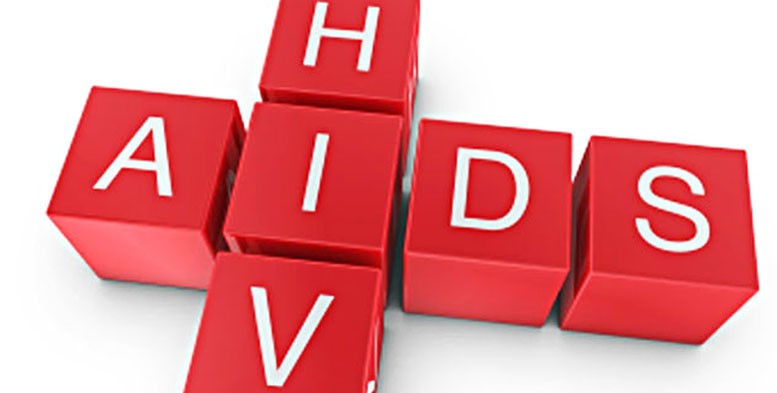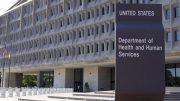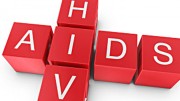The fight against HIV/AIDS Seen from an Unexpected Political Position
By: Eric Brus*–
The results of the 2016 U.S. national election came as a great surprise to many, and the election of Donald Trump as President, together with Republican majorities in the U.S. House and Senate, is expected to lead to extensive changes in both U.S. domestic and foreign policy and funding priorities.
To shed light on the policy changes that may occur during a Trump presidency, and that may affect issues relating to HIV/AIDS and hepatitis, we have compiled a list of related analyses, statements, and news stories released in the run-up to the 2016 election and its immediate aftermath.
Policy Briefings
- Where President-Elect Donald Trump Stands on Six Health Care Issues (Kaiser Family Foundation)
- The 2016 Presidential Candidates on Important Health Equity Issues and Comparing the Candidates and Parties (Fenway Health and Harlem United) – These documents, which were prepared before the election, include succinct summaries of the 2016 Republican Platform and the stated positions of Donald Trump and Vice-President Elect Michael Pence.
Statements from HIV/AIDS Organizations and Public Health Groups
- Where Do We Go from Here? (joint post-election statement from NMAC, the National Alliance of State and Territorial AIDS Directors, AIDS United, and the National Coalition of STD Directors)
- HIV Advocates Face Challenges New & Old After Stunning U.S. Elections (AIDS United)
- Standing Together: AVAC Statement on the U.S. Election (AVAC)
- Working the Grief, Pain, the Fear and the Anger of the 2016 Presidential Election (Black AIDS Institute, published in Poz)
- The Future of Our Movement (AIDS United)
- GMHC Responds to 2016 Election Results (GMHC)
- Statement on the Election and the Affordable Care Act (Enroll America)
Sources of Ongoing Coverage (News Services and Aggregators)
Kaiser Health News – This site has many articles about the impacts of the 2016 election on the U.S. healthcare system. Here are links to a sampling of those articles:
- Following Trump’s Win, Americans Sign Up For Health Law Coverage In Droves
- Republicans Likely To ‘Give Themselves Time’ To Set Health Law Replacement
- Trump’s Daunting Challenge: How Do You Actually Replace Obamacare?
- Trump’s Vague Policies Leave Key Questions on Future of Health Coverage, Quality, Medicare
- Millions Could Lose Medicaid Coverage Under Trump Plan
Selected Coverage from Various Other Sources
- HIV Under Trump: Policy Analyst on What Stays, What’s Cut (TheBody)
- Republicans Face Divisions Over ObamaCare Repeal (The Hill)
NYC Achieves 90-90-90 Targets for HIV+ Whites, But Not Latinos or Blacks
In 2014, the Joint United Nations Programme on HIV/AIDS (UNAIDS) launched its Fast Track strategy for ending the AIDS epidemic by 2030. This strategy included the so-called 90-90-90 targets to increase HIV testing, access to care, and maintenance in care such that, by 2020:
- 90% of all people living with HIV will know their HIV status;
- 90% of all people with diagnosed HIV infection will receive sustained antiretroviral therapy (ART); and
- 90% of all people receiving ART will have viral suppression.
During the past few years, nations, states, cities, and other jurisdictions have incorporated these 90-90-90 targets into their own strategic plans for ending AIDS. This summer, Swedish researchers published a report indicating that their nation was the first in the world to achieve the 90-90-90 goals.
Now, public health officials report that New York City (NYC) has partially achieved the 90-90-90 targets – reaching that milestone for Whites, but not for Latinos/Hispanics and Blacks. A research group from the NYC Department of Health and Mental Hygiene studied HIV diagnosis and medical data, and calculated rates of diagnoses, retention in care, and viral suppression for persons living with HIV (PLWH) in NYC. The researchers estimated that there were about 87,000 PLWH in NYC at the end of 2014, including 15,900 Whites, 28,900 Latinos/Hispanics, 39,800 Blacks, and 2,400 persons of other race/ethnicities.
Their detailed analysis of a large randomly selected sample of HIV+ NYC residents showed that Whites met all three 90-90-90 targets for knowledge of HIV status, being on ART, and achieving viral suppression, while Latinos/Hispanics and Blacks met only the first two of the three targets. Overall, 80% of the Whites studied had achieved viral suppression, compared to 73% for Latinos/Hispanics, and 67% for Blacks.
“Although substantial progress has been made on clinical outcomes among PLWH in NYC, more progress needs to be made among Latino/Hispanic and Black PLWH to reduce racial disparities,” the researchers noted. “Racial disparities occurred at the last step of the HIV care continuum from ART prescription to viral suppression. Innovative interventions to improve adherence to ART in Latino/Hispanic and Black PLWH are needed.”
NIMHD Designates Sexual and Gender Minorities as Health Disparity Populations
Last month, the National Institute on Minority Health and Health Disparities (NIMHD) formally designated sexual and gender minorities (SGM) as a health disparity population for National Institutes of Health (NIH) research. According to NIMHD, the term SGM includes “lesbian, gay, bisexual, and transgender populations, as well as those whose sexual orientation, gender identity and expressions, or reproductive development varies from traditional, societal, cultural, or physiological norms.” In announcing the designation, NIMHD director Eliseo Pérez-Stable noted that, “Mounting evidence indicates that SGM populations have less access to health care and higher burdens of certain diseases, such as depression, cancer, and HIV/AIDS. But the extent and causes of health disparities are not fully understood, and research on how to close these gaps is lacking.”
While marked progress has occurred in the public acceptance of, and legal rights for, some SGM population groups in recent years, “stigmatization, hate-violence, and discrimination are still major barriers to the health and well-being of SGM populations,” according to Pérez-Stable. “Research shows that sexual and gender minorities who live in communities with high levels of anti-SGM prejudice die sooner—12 years on average—than those living in more accepting communities.”
He noted that the designation builds on NIH’s previous steps to advance SGM health research. For example, in 2011, the Institute of Medicine published an NIH-commissioned report focusing on LGBT health issues. Responding to that report’s recommendations, NIH expanded its research portfolio and created the Sexual and Gender Minority Research Office (SGMRO). The SGMRO coordinates NIH-supported activities on SGM health issues and provides guidance to researchers both within and outside NIH.
U.S. STD Diagnoses Rose to Record Levels in 2015
The total combined cases of chlamydia, gonorrhea, and syphilis reached the highest number ever reported in the U.S., according to Sexually Transmitted Disease Surveillance 2015, from the Centers for Disease Control and Prevention (CDC). CDC statistics indicate that there were more than 1.5 million cases of chlamydia, nearly 400,000 cases of gonorrhea, and nearly 24,000 cases of primary and secondary (P&S) syphilis – the most infectious stages of that disease. The number of cases for each of these sexually transmitted diseases (STDs) increased significantly above the 2014 figures, with a 6% rise for chlamydia, 13% for gonorrhea, and 19% for P&S syphilis. The number of cases of congenital syphilis also rose 6% during 2015 to 487. The corresponding infection rates per 100,000 population were 479 for gonorrhea, 124 for chlamydia, 8 for syphilis, and 12 (per 100,000 live births) for congenital syphilis.
While the total cases and rates of P&S syphilis have increased among both men and women, men accounted for over 90% of all P&S syphilis cases during 2015. Rates of syphilis remain especially high among gay, bisexual, and other men who have sex with men (MSM). During 2015, MSM accounted for more than four-fifths (82%) of P&S cases among men in which the sex of the partner was known. HIV coinfection was also common among MSM diagnosed with P&S syphilis during 2015. Among MSM who presented with P&S syphilis at participating STD clinics, the proportion who were coinfected with HIV ranged from about 21% in Los Angeles to 59% in Baltimore.
“The health outcomes of syphilis—miscarriage, stillbirth, blindness, or stroke—can be devastating,” commented Gail Bolan, director of CDC’s Division of STD Prevention. “The resurgence of congenital syphilis and the increasing impact of syphilis among gay and bisexual men makes it clear that many Americans are not getting the preventive services they need. Every pregnant woman should be tested for syphilis, and sexually active gay and bisexual men should be tested for syphilis at least once a year.”
The 2015 STD surveillance data also showed that both the numbers and rates of chlamydia and gonorrhea cases continue to be highest among young people between the ages of 15 through 24. This age group accounts for half (50%) of total U.S. chlamydia cases and nearly two-thirds (65%) of gonorrhea cases. While both young women and men are heavily affected by these two STDs, young women generally face the most serious long-term health consequences. Researchers estimate that undiagnosed STDs cause infertility in more than 20,000 women each year.
“We have reached a decisive moment for the nation,” noted Jonathan Mermin, director of CDC’s National Center for HIV/AIDS, Viral Hepatitis, STD, and TB Prevention. “STD rates are rising, and many of the country’s systems for preventing STDs have eroded. We must mobilize, rebuild, and expand services—or the human and economic burden will continue to grow.”
Southern Initiative to Address HIV Disparities Among Minority Populations
The National Association of County and City Health Officials (NACCHO), in partnership with Cicatelli Associates, Inc. (CAI), has launched the Southern Initiative – a project to improve HIV health outcomes among minority populations in the Southern U.S. More than half of the newly diagnosed U.S. HIV cases occur in the South, according to NACCHO. “In addition, outcomes along the HIV care continuum are among the lowest in the country, and disparities among minority populations are particularly pronounced.” The 3-year Southern Initiative will focus on Ryan White Part A jurisdictions in Atlanta, Houston, Memphis, and New Orleans. NACCHO notes that each jurisdiction will receive funding and technical assistance “to implement innovative and evidence-based interventions aimed at improving outcomes across the HIV care continuum, and reducing disparities among minority populations, particularly men who have sex with men, youth, cisgender and transgender women, and people who inject drugs.” Consistent with National HIV/AIDS Strategy goals, these interventions will be designed to link people to care seamlessly after HIV diagnosis, as well as to support retention in care to achieve viral suppression. For persons who test HIV-negative, there will be interventions to support prevention counseling and planning, including the provision of pre-exposure prophylaxis, as appropriate. NACCHO and CAI will work closely with local HIV programs to ensure that Southern Initiative activities are integrated into the local HIV services infrastructure and are sustainable beyond the project period. The Southern Initiative is supported by the HHS Secretary’s Minority AIDS Initiative Fund and administered by the Health Resources and Services Administration’s HIV/AIDS Bureau.
The U.S. HIV/AIDS Epidemic: Planning Documents
National HIV/AIDS Strategy: Updated to 2020. This 74-page document from the White House is designed to guide the U.S. HIV/AIDS response through the year 2020. It outlines a series of steps needed to achieve four primary goals: 1) reducing new HIV infections; 2) increasing access to care and improving health outcomes for people living with HIV; 3) reducing HIV-related disparities and health inequities; and 4) achieving a more coordinated national response to the U.S. HIV epidemic.
Federal Action Plan for 2016-2020. This 40-page plan from the White House outlines specific actions federal agencies will take to implement the updated National HIV/AIDS Strategy above.
*Eric Brus is the Director of Health Information at AIDS Action Committee. This report is produced by the Health Library of the AIDS Action Committee in collaboration with the New England AIDS Education and Training Center Minority AIDS Initiative Project. The full version is available online.







